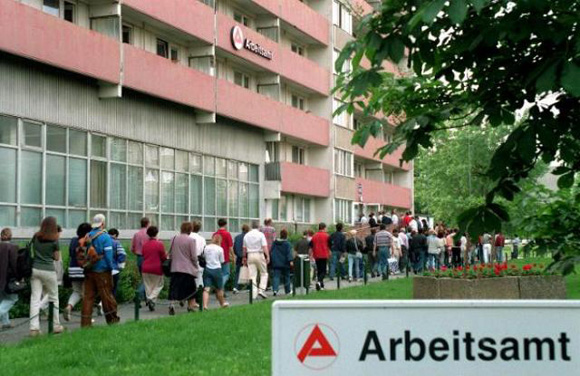Source

Source: picture-alliance / ZB (c) ZB-Fotoreport
Within the framework of the Honecker-era housing program of the 1970’s and 1980’s, “Plattenbau” settlements made from prefabricated concrete slabs were built in Berlin’s newly created districts of Marzahn, Hohenschönhausen, and Hellersdorf. After the Wende, these districts were the ones most strongly affected by out-migration to the surrounding areas and other federal states. In Marzahn alone, the population decreased by nearly 15,000 between 1989 and the end of 1996. On top of this structural problem came unemployment: in 1995, unemployment figures for Marzahn, Hohenschönhausen, and Hellersdorf totaled 20,000; by December 2000, they had climbed to 35,000. Additional social problems, such the failure to integrate ethnic German emigrants and right-wing radicalism, continues to make life in the “Plattenbau” settlements difficult today.

Source: picture-alliance / ZB (c) ZB-Fotoreport